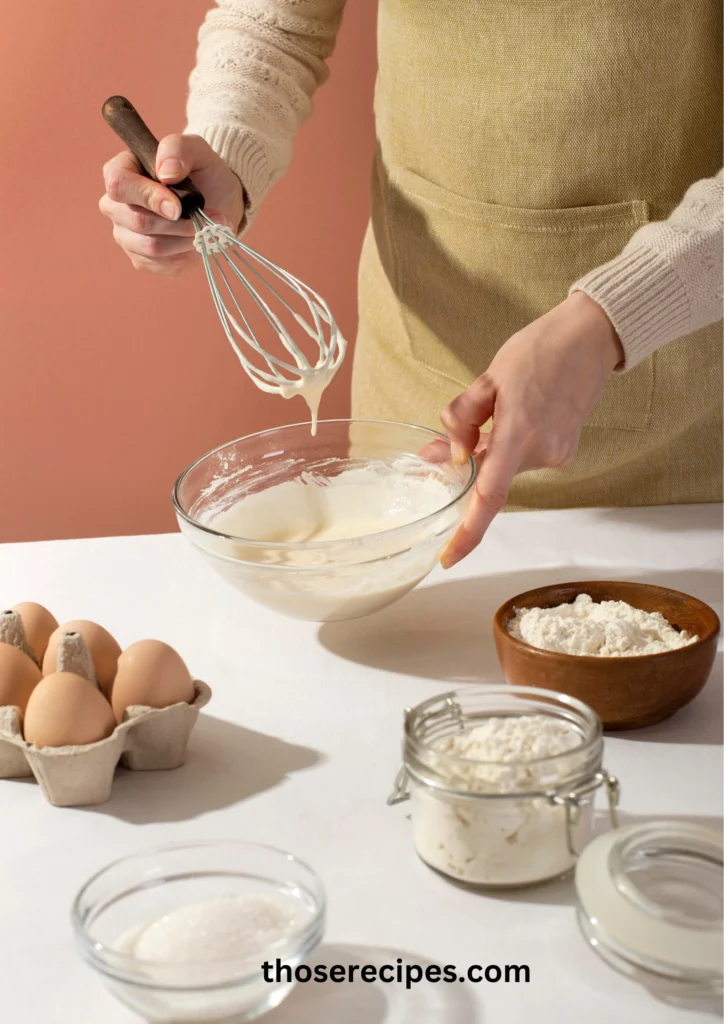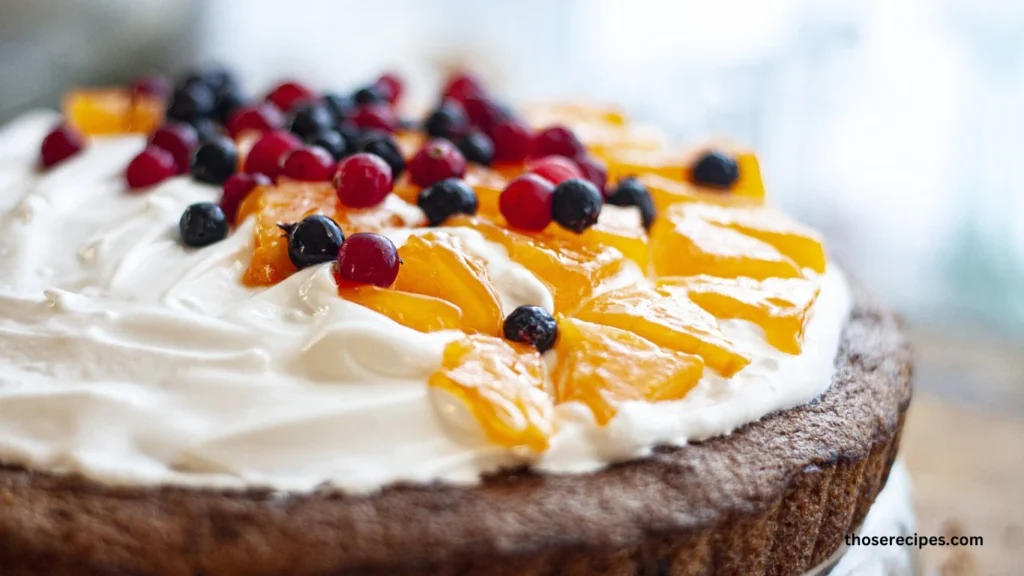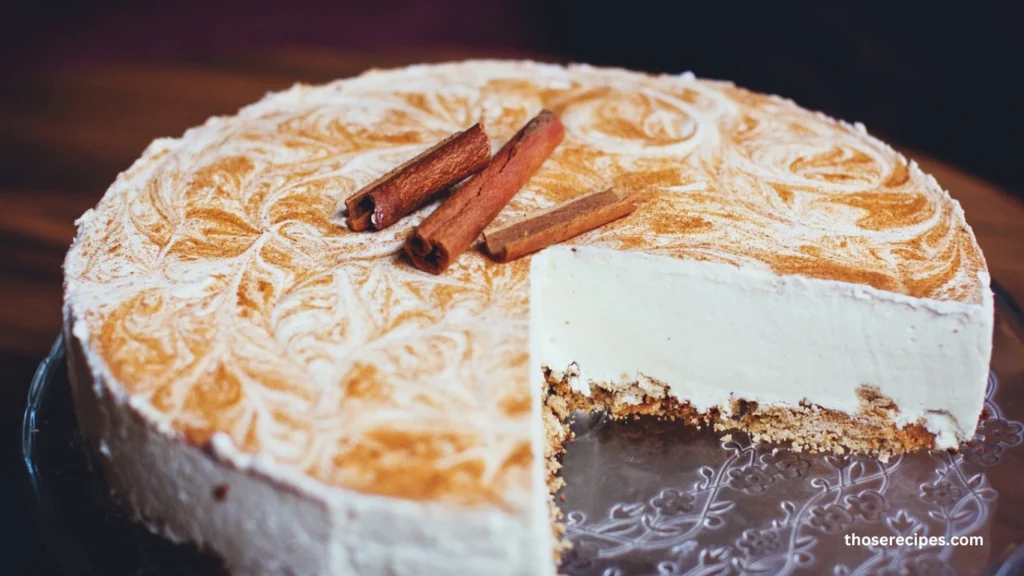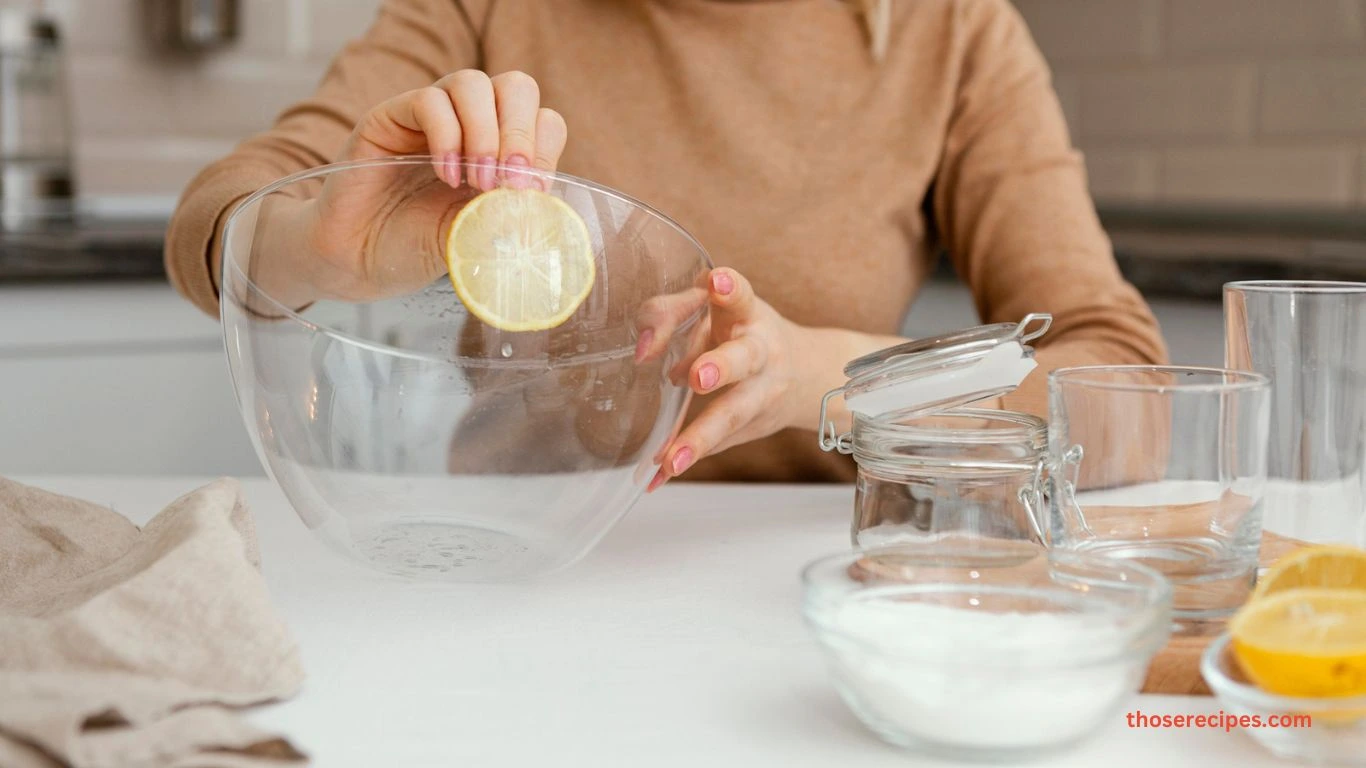Introduction
If you’re searching for a secret ingredient that can transform your baking, look no further than glycerine. Used by professional bakers and home enthusiasts alike, glycerine is a game-changer when it comes to creating moist, tender, and long-lasting cakes. Mastering a cake glycerine recipe can help you achieve bakery-quality results, ensuring that your cakes remain soft and flavorful, even days after baking.
Glycerine is a natural, food-grade ingredient derived from plant oils or animal fats. Its primary function in baking is as a humectant, which means it helps retain moisture, preventing cakes from drying out. This makes it an essential addition to recipes for sponge cakes, fondant-covered cakes, or any baked good where softness and moisture are key. Moreover, glycerine enhances the texture of cakes, giving them a velvety, tender crumb that melts in your mouth.
The beauty of incorporating a cake glycerine recipe into your baking is its versatility. From classic vanilla cakes to decadent chocolate creations, glycerine ensures that your desserts remain fresh and appealing for longer periods. It’s especially beneficial for cakes made in advance or stored for special occasions, where maintaining that just-baked quality is essential.
In this article, you’ll discover everything you need to know about using glycerine in baking. We’ll guide you through its benefits, a step-by-step recipe, essential tips for success, and creative variations to try. Whether you’re making a simple cake for a family gathering or a show-stopping dessert for a celebration, learning to use glycerine will elevate your baking skills to new heights. Let’s dive into the science, art, and delicious possibilities of a cake glycerine recipe that will wow your family and friends!

What is Glycerine in Cake Baking?
Understanding the Role of Glycerine in Baking
Glycerine, a clear and odorless liquid derived from natural sources such as plant oils or animal fats, is a powerful yet often overlooked ingredient in the world of baking. In a cake glycerine recipe, it plays a transformative role, elevating the texture, moisture retention, and overall quality of your baked goods. Acting as a humectant, glycerine attracts and retains moisture, ensuring that cakes remain soft, tender, and fresh for longer periods.
Unlike other common baking ingredients, glycerine doesn’t add flavor or aroma to your cake. Instead, it enhances the final product’s structural integrity and shelf life. For bakers who frequently work with fondant-covered cakes or sponge cakes, glycerine is indispensable. It prevents cracking in fondant and ensures that sponge cakes maintain their delicate, airy texture.
Benefits of Using Glycerine in a Cake Glycerine Recipe
- Moisture Retention
Glycerine locks in moisture, preventing cakes from drying out during storage. This is especially useful for cakes made in advance for special occasions. - Improved Texture
Cakes made with glycerine are softer and more tender, delivering a bakery-quality crumb that’s hard to achieve with standard recipes. - Enhanced Freshness
By extending shelf life, glycerine allows your cakes to stay fresh and enjoyable for days. - Fondant-Friendly
For decorators, glycerine keeps fondant pliable and prevents it from drying or cracking, making it easier to work with.
Why You Should Try a Cake Glycerine Recipe
Incorporating glycerine into your cake recipes can dramatically improve the outcome, particularly if you’re striving for professional results. Whether you’re making a simple family dessert or an elaborate tiered cake, the addition of glycerine ensures a moist, tender, and long-lasting masterpiece every time. It’s a simple upgrade with impressive results.
Ingredients for a Cake Glycerine Recipe
The Essential Ingredients You Need
Creating the perfect cake glycerine recipe doesn’t require an extensive list of hard-to-find items. Instead, it’s about combining simple, everyday baking staples with the magic of glycerine to produce a moist, tender, and flavorful cake. Below is a breakdown of the essential ingredients and their role in making your cake a success.
Ingredient List for a Classic Cake Glycerine Recipe
| Ingredient | Quantity |
| All-purpose flour | 2 cups |
| Granulated sugar | 1 cup |
| Baking powder | 2 teaspoons |
| Eggs | 2 large |
| Milk | 1 cup |
| Vegetable oil or butter | 1/2 cup |
| Vanilla extract | 1 teaspoon |
| Glycerine (food-grade) | 1 tablespoon |
The Role of Glycerine and Other Ingredients
- Glycerine
The star of this recipe, glycerine, acts as a humectant, locking in moisture and creating a tender crumb. This is what ensures your cake stays soft and fresh for days. - All-Purpose Flour
Provides the structure and stability needed for the cake while keeping it light and fluffy. - Sugar
Not only sweetens the cake but also contributes to the softness and overall texture. - Eggs
Act as a binder, adding richness and structure to the cake. - Milk
Enhances moisture and ensures the batter comes together smoothly. - Vegetable Oil or Butter
Adds richness and helps retain moisture, complementing the glycerine’s effects. - Vanilla Extract
Brings flavor depth, balancing the sweetness and elevating the cake’s aroma.
Customizing Your Ingredients
While the above ingredients are perfect for a classic cake glycerine recipe, there’s plenty of room for customization. Swap vanilla extract for almond or citrus zest for a unique twist, or incorporate cocoa powder for a chocolate version. The addition of nuts or dried fruit can also bring texture and variety to your cake.
By assembling these simple yet essential ingredients, you’re well on your way to baking a soft, tender cake that’s sure to impress!

Step-by-Step Cake Glycerine Recipe
Mastering a cake glycerine recipe is simpler than you might think. With the right ingredients and an easy-to-follow method, you’ll achieve a cake that’s moist, tender, and perfect for any occasion. Here’s a detailed step-by-step guide to help you bake your best cake yet.
Prepare Your Baking Tools and Oven
- Preheat your oven to 350°F (175°C). A consistent oven temperature is crucial for even baking.
- Grease and flour your cake pan, or line it with parchment paper. This ensures the cake doesn’t stick and releases cleanly.
Gather and Measure Ingredients
Baking is a science, so precise measurements are key. Lay out all your ingredients for the cake glycerine recipe, ensuring everything is at room temperature, especially the eggs and milk. This helps the ingredients combine more smoothly, leading to a consistent batter.
Mix the Dry Ingredients
- In a large mixing bowl, sift together the all-purpose flour, baking powder, and a pinch of salt. Sifting aerates the flour, ensuring a lighter and fluffier cake.
- Stir in the granulated sugar to evenly distribute the sweetness.
Combine the Wet Ingredients
- In a separate bowl, whisk the eggs until they’re light and frothy. This adds air to the batter, helping the cake rise.
- Add the milk, vegetable oil or melted butter, vanilla extract, and glycerine. Mix until fully combined.
Create the Batter
- Gradually add the wet ingredients to the dry mixture, stirring gently to avoid overmixing. Overmixing can lead to a dense cake.
- Once the batter is smooth and lump-free, pour it into your prepared cake pan, spreading it evenly with a spatula.
Bake the Cake
- Place the pan in the preheated oven and bake for 30–35 minutes. Start checking for doneness at the 30-minute mark by inserting a toothpick into the center. If it comes out clean, the cake is ready.
- Remove the cake from the oven and let it cool in the pan for 10 minutes before transferring it to a wire rack to cool completely.
Serve and Enjoy
Once cooled, your cake is ready to be frosted, decorated, or served as is. Thanks to the glycerine, this cake will stay moist and tender for days, making it ideal for gatherings or as a make-ahead dessert.
Pro Tips for Success
- Always preheat your oven to the correct temperature before baking.
- Use food-grade glycerine for optimal results and safety.
- Allow the cake to cool completely before applying frosting to prevent it from melting.
With this step-by-step guide, your cake glycerine recipe will yield consistently delightful results every time. Whether for birthdays, holidays, or a simple treat, this recipe is guaranteed to impress!

Tips for Perfecting Your Cake Glycerine Recipe
Achieving perfection in your cake glycerine recipe involves precise measurements and understanding ingredient roles. For example, using glycerine alongside dairy like kefir can add another layer of moisture and tanginess to your cakes. If you’re curious about how to incorporate kefir into your baking, check out The Ultimate Guide to Making a Perfect Kefir Sheet Cake Recipe Card. This guide provides excellent tips on working with kefir and how it complements other ingredients, much like glycerine does. Combining these approaches ensures your cakes remain moist, tender, and full of flavor, even days after baking.
1. Measure Ingredients Accurately
Baking is precise, and even slight variations in ingredient measurements can affect the final result. Use a kitchen scale for dry ingredients like flour and sugar, and a measuring cup for liquids to ensure consistency.
2. Don’t Overmix the Batter
One of the significant advantages of using glycerine in baking is its ability to keep fondant pliable and prevent cracking, especially when decorating intricate cakes. If you’re new to working with fondant, learning about its properties and applications can be incredibly helpful. For a detailed explanation of fondant, its types, and its uses in baking, refer to this guide on Fondant Icing. Incorporating glycerine into your fondant-covered cakes not only ensures a flawless finish but also keeps the cake underneath moist and tender for days, making it a favorite technique among professional bakers.
3. Fondant-Friendly Baking
The quality of glycerine matters in your cake glycerine recipe. Always opt for food-grade glycerine to ensure safety and the best results. It’s widely available in baking supply stores or online.
4. Incorporate Room-Temperature Ingredients
Cold ingredients, such as eggs or milk, can cause the batter to curdle or bake unevenly. Allow them to come to room temperature before mixing to achieve a smooth, consistent batter.
5. Enhance Moisture with Glycerine
Glycerine is a powerful moisture-retaining agent, but balance is key. Stick to the recommended 1 tablespoon per recipe to avoid a gummy texture. If your cake includes additional moisture-rich ingredients like yogurt or fruit puree, adjust the amount of glycerine slightly.
6. Prevent Overbaking
Overbaking is the fastest way to dry out your cake. Use an oven thermometer to confirm your oven temperature is accurate, and check the cake a few minutes before the suggested bake time.
7. Let the Cake Rest
Once your cake is out of the oven, let it rest for 10 minutes in the pan. This allows the structure to set before transferring it to a cooling rack.
By applying these tips, your cake glycerine recipe will yield a perfectly moist and tender cake every time. Whether you’re baking for a special occasion or simply indulging in a homemade treat, these small adjustments can make a big difference!
Recipe Variations for Cake Glycerine Recipe
One of the most appealing aspects of a cake glycerine recipe is its versatility. By tweaking ingredients and flavors, you can create a variety of cakes that cater to different occasions, tastes, and dietary preferences. Below are some creative variations to inspire your baking journey.
1. Chocolate Glycerine Cake
Transform your classic recipe into a rich, indulgent chocolate cake by substituting 1/3 cup of the flour with unsweetened cocoa powder. To enhance the chocolate flavor, consider adding a teaspoon of espresso powder to the batter. The glycerine will ensure your cake remains moist and soft, even with the addition of cocoa.
2. Citrus Delight Cake
Add the zest of one lemon or orange, along with two tablespoons of freshly squeezed juice, to infuse your cake with a bright, tangy flavor. The citrus pairs beautifully with the glycerine’s moisture-retaining properties, resulting in a light and refreshing dessert perfect for summer gatherings.
3. Gluten-Free Cake Glycerine Recipe
For those avoiding gluten, replace all-purpose flour with a gluten-free baking mix. To compensate for the slightly drier nature of gluten-free flours, increase the amount of glycerine to 1 1/2 tablespoons. This small adjustment will maintain the cake’s tenderness and moist texture.
4. Spiced Glycerine Cake
Give your cake a warm, cozy twist by adding a teaspoon each of cinnamon, nutmeg, and allspice to the batter. This variation works wonderfully for fall or holiday celebrations and pairs well with cream cheese frosting or a dusting of powdered sugar.
5. Vegan-Friendly Option
To make a vegan cake glycerine recipe, substitute eggs with a flaxseed or chia seed mixture (1 tablespoon seeds mixed with 3 tablespoons water per egg). Use a plant-based milk like almond or oat and vegetable oil instead of butter. The glycerine will play a crucial role in ensuring the cake remains moist and tender.
These variations showcase the flexibility of a cake glycerine recipe, allowing you to adapt it for different preferences and events. Whether you’re baking a decadent chocolate cake, a zesty citrus creation, or a holiday-inspired treat, glycerine will always ensure your cakes are moist, tender, and unforgettable. Get creative and make each bake uniquely yours!
Nutritional Information for Cake Glycerine Recipe
A typical slice of cake made with glycerine contains approximately:
- Calories: 250–300
- Protein: 4g
- Fat: 12g
- Carbohydrates: 35g
- Fiber: 1g
The addition of glycerine doesn’t significantly alter the calorie count but enhances the cake’s texture and shelf life, making it worth the inclusion.
FAQs About Cake Glycerine Recipe
What does glycerine do to cake?
Glycerine is a game-changer in baking, particularly for cakes. It acts as a humectant, which means it helps retain moisture in your cake, ensuring it stays soft and tender for longer. Glycerine also improves the texture of cakes, giving them a smooth and velvety crumb. Additionally, it’s invaluable for fondant-covered cakes, as it prevents the fondant from cracking or drying out. If you want cakes that remain moist and bakery-fresh for days, glycerine is a must-have ingredient.
How much glycerine to add to cake batter?
The ideal amount of glycerine to add to cake batter is typically 1 tablespoon per standard recipe. This amount is enough to enhance the moisture and texture without making the cake too dense or sticky. If you’re using additional moisture-rich ingredients, like yogurt or fruit puree, you can slightly adjust the amount of glycerine to balance the texture.
How do you make glycerin for baking?
Making glycerine at home is not common, as food-grade glycerine requires specialized equipment and processes. However, you can easily purchase food-grade glycerine from baking supply stores or online retailers. Always ensure that the glycerine you use is labeled as safe for consumption to achieve the best results in your baking.
Is glycerin the same as glucose syrup?
No, glycerine and glucose syrup are not the same, though they are sometimes used for similar purposes in baking. Glycerine is a humectant that retains moisture, while glucose syrup is a sweetener that adds viscosity to recipes like candies and icings. They are not interchangeable, as their properties and effects on the final product are quite different. For a cake glycerine recipe, it’s essential to use glycerine for its moisture-retaining benefits.
Conclusion
Mastering a cake glycerine recipe is a game-changer for any baker. This simple ingredient ensures your cakes stay moist, soft, and bakery-fresh for longer. Whether you’re making a classic sponge, a rich chocolate cake, or experimenting with gluten-free options, glycerine is the secret to success. By following the tips and variations in this guide, you’ll create cakes that not only taste amazing but also impress everyone who takes a bite. So, grab your apron and start baking your way to perfection!



1 thought on “Cake Glycerine Recipe: The Ultimate Guide to Moist and Tender Cakes”